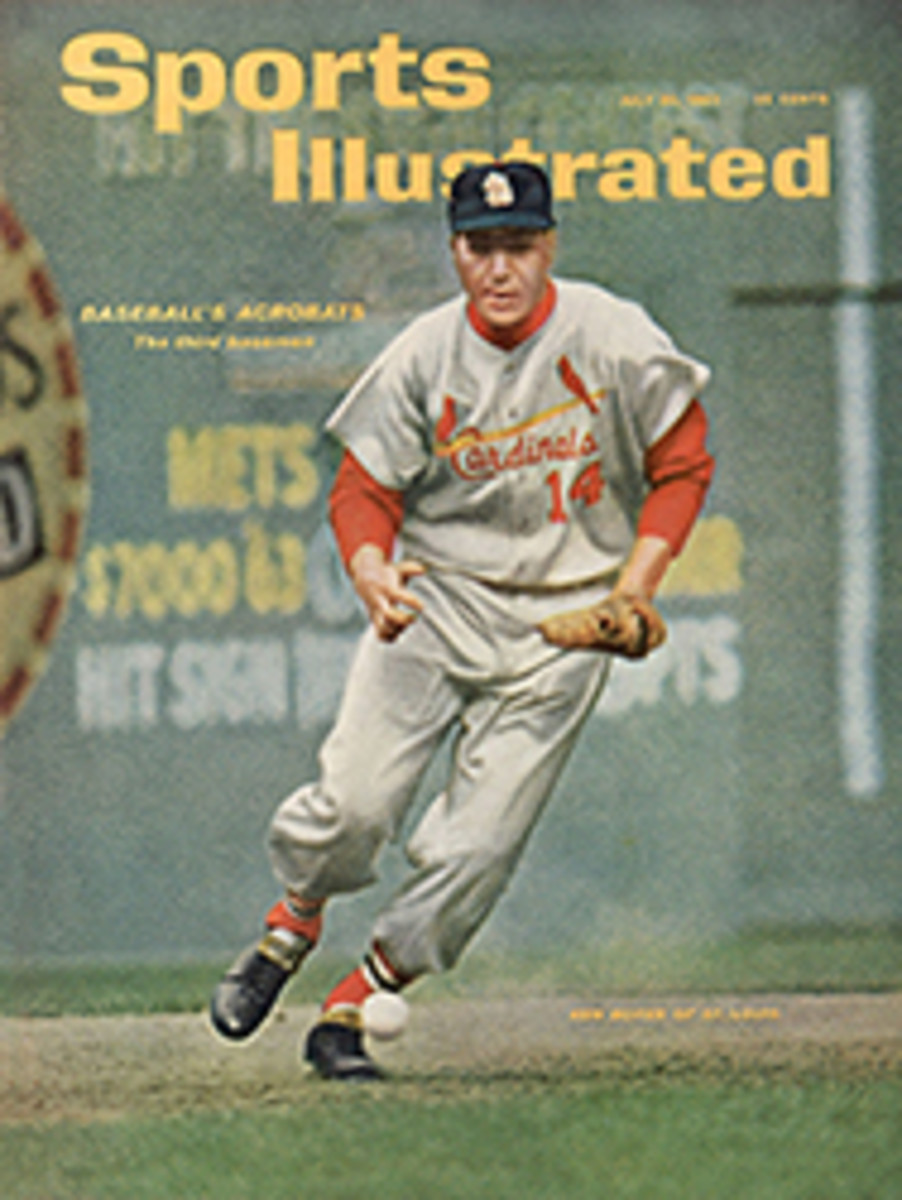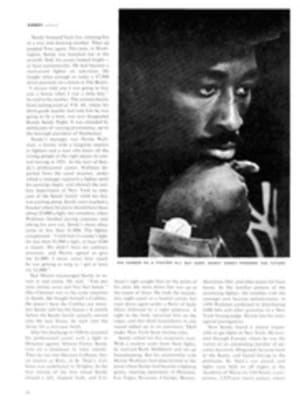
A boat watcher's guide to Newport
Anyone visiting Newport from now till late September might well assume that this ancient Rhode Island town had never lost its position as queen of American resorts. The harbor is filled with yachts. The no-vacancy sign hangs on most lodging places, and house parties are going full blast out on Ocean Drive. The jazz festival has just left town, and Tennis Week starts on August 13, when debutantes will dance every night under striped canvas at Bailey's Beach. But the truth of the matter is that the history of Newport has been a series of highs and lows; and if it were not for the renewed series of America's Cup challenges Newport would be in a low right now.
The fine exotic trees—the weeping beeches and towering tulips—can't conceal the fact that many a Gothic Newport mansion has become a Gothic pigeon cote. And Thames Street, whose cobblestones have rattled with the commerce of shipping since 1650, is a row of vacant shops and Army-Navy stores. Even the Navy is pulling out. Goat Island in the harbor, site of the Navy's first torpedo base, is now for sale for $35,500 to any developer willing to connect it to the mainland.
This roller-coaster status began for Newport some 300 years ago. The town was one of the early glories of colonial America, with the most prosperous and eclectic society in the New World. The Redwood Library, a neo-classic architectural treasure, was built in 1750 and is the oldest public library in the country. The Touro Synagogue, built in 1763 and now a national shrine, is the oldest synagogue in America. Both buildings are handsome monuments to the early days of the city.
Near them, along the wharfs and up the hill from Thames Street, there are more prerevolutionary buildings still standing than on any other site in the U.S., more than 300 of them: the old Colony House, Trinity Church, whole streets, like Clarke Street, of honest frame houses with Adam fanlights and mullioned windows (Rochambeau slept here; rooms to let). Richly furnished 18th-century mansions—like Hunter House—are now open to the public.
During the Revolution, Newport was occupied by British and Hessian troops who, along with an epidemic of smallpox, so oppressed the citizens that many of them left town for good, and Newport went into its first decline.
In the second half of the 19th century Newport's fortunes rose again, as the town became the summer capital of America's new society of industrial magnates. The moderating influence of the Gulf Stream made it "one coat warmer than Boston or New York," and its rock-bound promontories, cooled by Atlantic spray, were soon crowned by Gothic and Tudor piles—the most extravagant collection of private residences built anywhere since the Renaissance. The gaudiest were Commodore Vanderbilt's The Breakers, patterned on an Italian Renaissance palace, and Belcourt, O.H.P. Belmont's castle out on Bellevue Avenue.
Along with this opulence came sport. The first international polo match in America was played here in 1886. The first U.S. Open golf tournament was held in 1895 at the Newport Country Club. (It is now open to the public—greens fees $5 on weekdays, $7.50 on Sundays.) In 1879, James Gordon Bennett commissioned Architect Stanford White to build the Newport Casino. It is one of the finest examples of shingle architecture in America. In 1881 the first national lawn tennis singles championship was held there. It now houses the National Lawn Tennis Museum.
Income tax—and the 1929 market crash—ended that gilded time. Although many of the Newport "cottages" are still splendid summer retreats (Hammersmith Farm, for instance, home of Hugh Auchincloss, Jackie Kennedy's stepfather), no one any longer has 16 liveried servants. And while the debs and dowagers still come for Tennis Week, the tearoom-restaurant at the Casino is now decorated with bad murals of Portofino.
However, since the resumption of America's Cup racing the Newport tide is rising again and the town is taking renewed pride in both its past and its future. The Preservation Society is campaigning for a million-dollar bond issue lo save and restore 100 of the finest colonial buildings in town. And the city plans to tear down the rundown shops on Thames Street and turn its rickety waterfront into an esplanade with marinas fit for a port which, every other June, is the starting point of the Bermuda race and which becomes the world capital of yachting in an America's Cup summer.
SEEING THE RACES
Though the America's Cup races against the Australian challenger beginning Sept. 15 will be spectacular to watch, the best time to see 12-meter boats in action will be during the final trials to pick the American defender. In these trials four boats—Weatherly, Nefertiti, Easterner and Columbia—will sail against one another every day except Sunday from August 15 until September 8, or until the New York Yacht Club Selection Committee makes its choice. Lodgings in and around Newport are still available for this period, but during the actual Cup races things are as tight as a tick. For the period of the trials there is no excursion sightseeing steamer, so it is necessary to have your own boat—or a charter. Powerboats capable of doing 12 to 15 knots are recommended to keep up with the fast 12-meters, and for security in the possibly rough seas nine miles past Brenton Reef Lightship your spectator boat should not be much less than 26 to 28 feet in length. Power cruisers or motor sailers that will carry 4 to 6 people range upward in price from $350 a week (minimum rental time) without crew, up ward of $850 with a skipper. Charter agents with a good variety of craft available are Spark-man & Stephens, 11 East 44 St., New York; Northrop & Johnson, 366 Madison Ave., New York; M. Rosenblatt & Son, 350 Broadway, New York; Norton Shipyard, 3 Swan Ave., Newport; and Captain Bud Phillips, Snell Road, Little Compton, R.I. The Newport Chamber of Commerce also has a list of skippers willing to charter.
If you are dead set on seeing the actual Cup races, and have no boat, charter or berth space already laid on, the best plan is to board one of four large excursion boats. Travel Agents Raymond & Whitcomb, 21 East 51 St., New York and 44 School St., Boston, have three 3-decker boats that can carry 350 to 500 spectators each without crowding. Two of them will leave Hammett's Wharf, Newport at 9:30 each race day; and one will leave from New Harbor, Block Island, also at 9:30. Price is $52.80, including tax, for the first four days, and 4-day ticket holders have options for additional race days. Single tickets are $16.50 per day. Raymond & Whitcomb also will secure shore accommodations for passengers.
The Raymond & Whitcomb fleet will be joined by the Nantasket Line's S.S. Potomac, a 4-decker that will carry 1,600 comfortably. Tickets are $50, including tax, for 4 days, SI 6.50 for one (write to 8 Rowe's Wharf, Boston). The Potomac will leave Navy Dock, Newport, at 9:30 on race days.
The wife of a race committee member advises that spectator equipment should include Bo-nine pills, waterproof slickers, a heavy sweater and binoculars—in order of importance. And for those who like to look at boats but can't bear the thought of being on one, we suggest putting together a thermos of Martinis, picking up some cold lobster at Mack's Fish House and joining the crowds of Newport residents who will be sitting on the rocks below Ocean Drive watching the parade of sails disappear over the horizon.
EATING AND SLEEPING IN NEWPORT
In Newport, eating out is mostly a matter of steaks, chops, chicken and the good local fish and lobster. Angelo's, 5 Memorial Drive, has the best food in town. Ask for the scampi—it's not on the menu. Christie's (see map) is the yachtsman's watering trough and scuttlebutt station. The management has stocked Swan beer and kangaroo stew for the Australians, but the Australians are eating American steak and drinking American beer. So are the crews of the American boats, who often drop into Christie's when their 12-meter boats are being worked on at the Newport Shipyard just across the way.
The Shamrock Cliff, a redsandstone restaurant and hotel, once the home of Broker E. F. Button, has a superb view of Narragansett Bay, adequate food. The White Horse Tavern (bring your own bottle). Farewell and Marlborough Sts., makes up for the lack of a liquor license by its colonial charm—built in 1687, it is the oldest operating tavern in America. The Viking offers standard New England hotel fare and a race-week atmosphere of pure frenzy, somewhat alleviated this year by the addition of a swimming pool and a motel wing. Rates are from $20 per double room.
The Muenchinger-King is a Victorian conglomeration favored by old ladies and race committees. Rooms arc $14 per day. The Port-O'-Call, a new small boatel, has a dock, provisions and is a fine place for yachtsmen, but is sold out till after the races. Other possibilities: Cliff Walk Manor, 82 Memorial Blvd., $14 per double; Newport Motor Inn in nearby Middletown, $18 per double.
MAP
Goat Island
Jamestown Ferry
Ida Lewis Yacht Club
Fort Adams
Hammersmith Farm (President Kennedy sleeps here)
Excursion steamer
Shamrock Cliff Hotel
Castle Hill Light
Castle Hill ("Gretel's" crew sleeps here)
Newport Country Club
Ocean Drive
Brenton Reef Lightship
To the races
To the races
Hunter House (1748)
White Horse Tavern
Norman Bird Sanctuary
Colony House
Christie's
Trinity Church
Touro Synagogue
Newport Shipyard
Hotel Viking
Easton's Beach
Sachuest Beach
Newport Casino
Freebody Park (Jazz Festival site)
Thames Street
"Rover" ("Easterner's" crew sleeps aboard)
The Breakers
Ocean Manor ("Columbia's" crew sleeps here)
Bellevue Avenue
Cliff Walk
Belcourt
Bailey's Beach
Seafields ("Nefertiti's" crew sleeps here)
Seafair ("Weatherly's" crew sleeps here)

